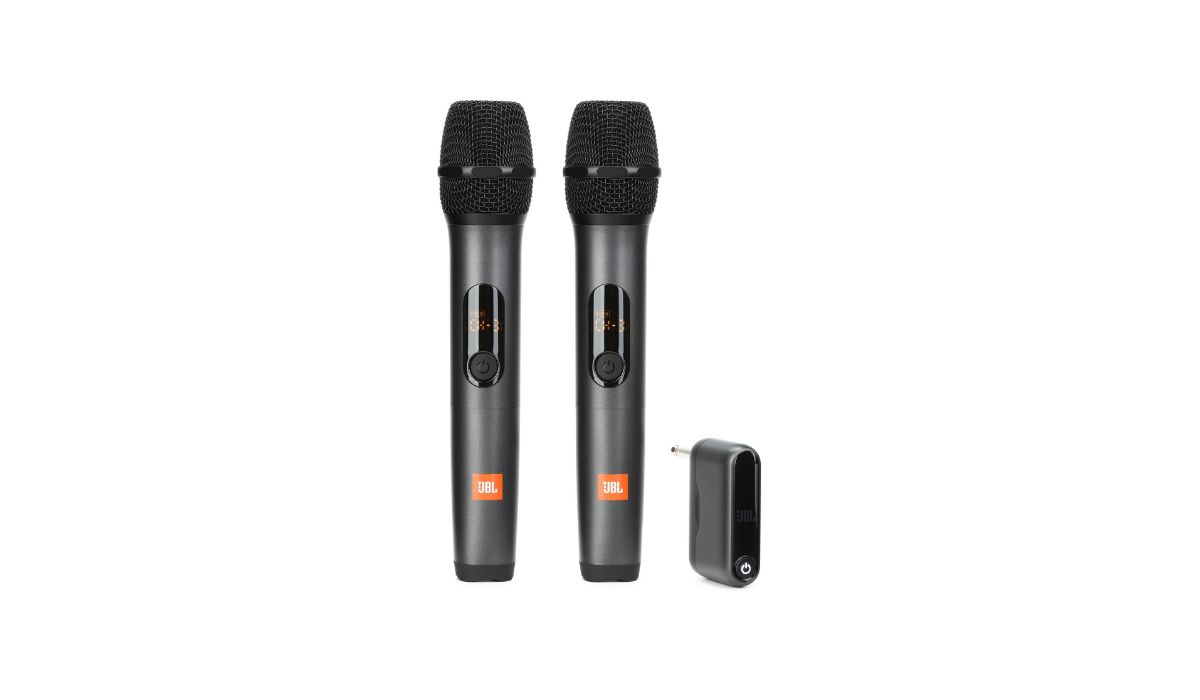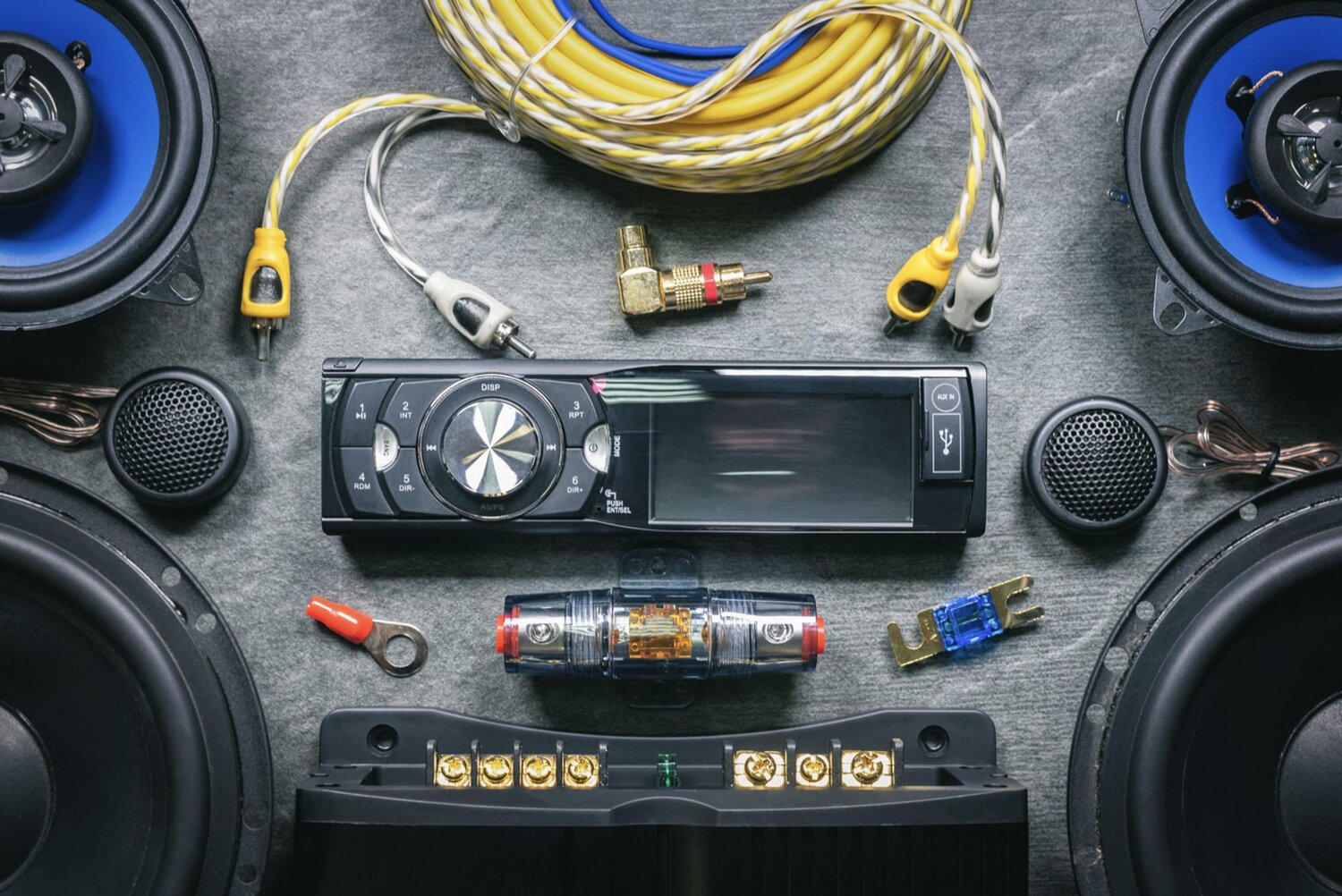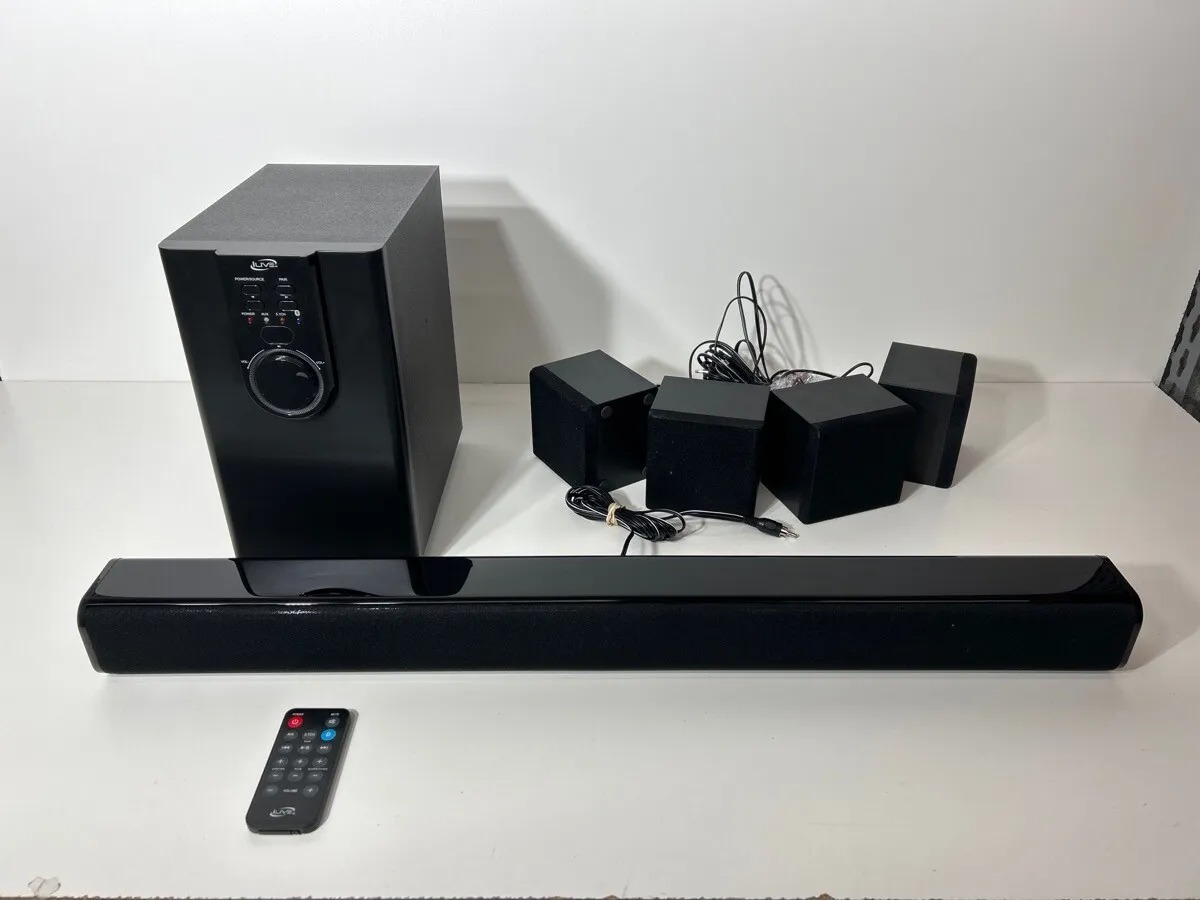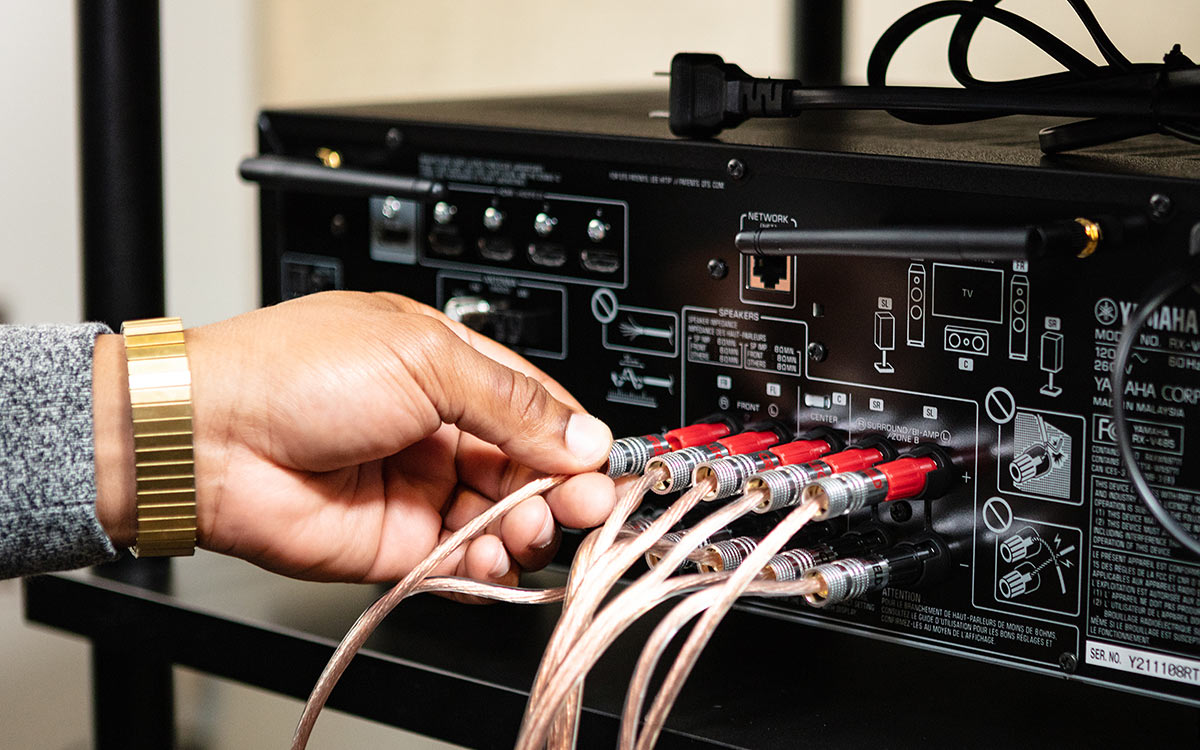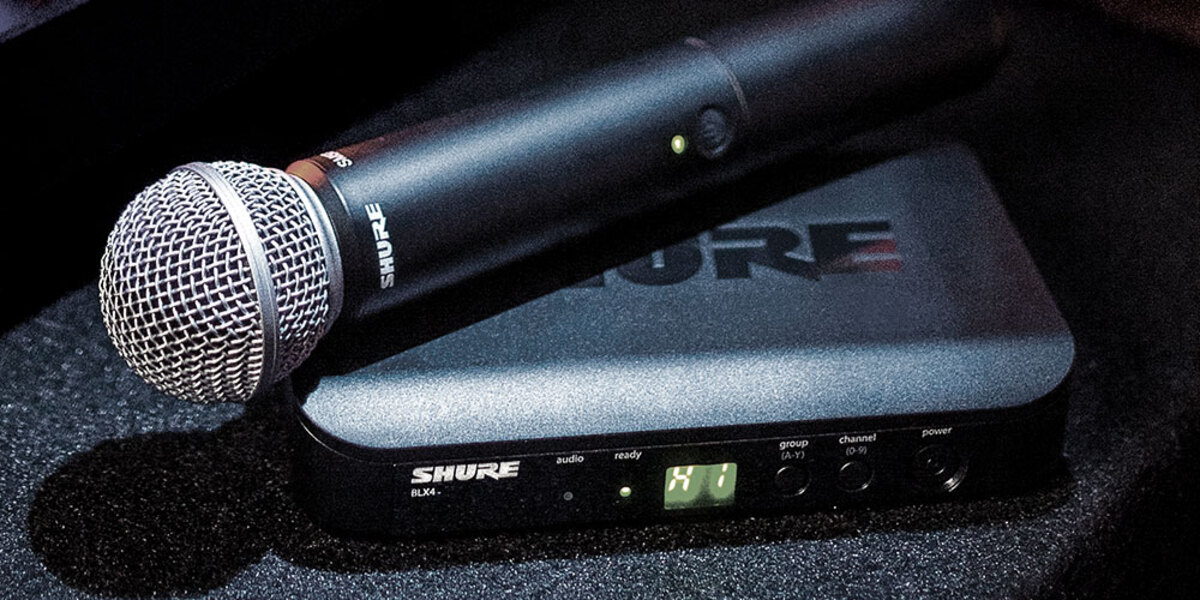Home>Devices & Equipment>Microphone>How To Hook Up A Wireless Microphone
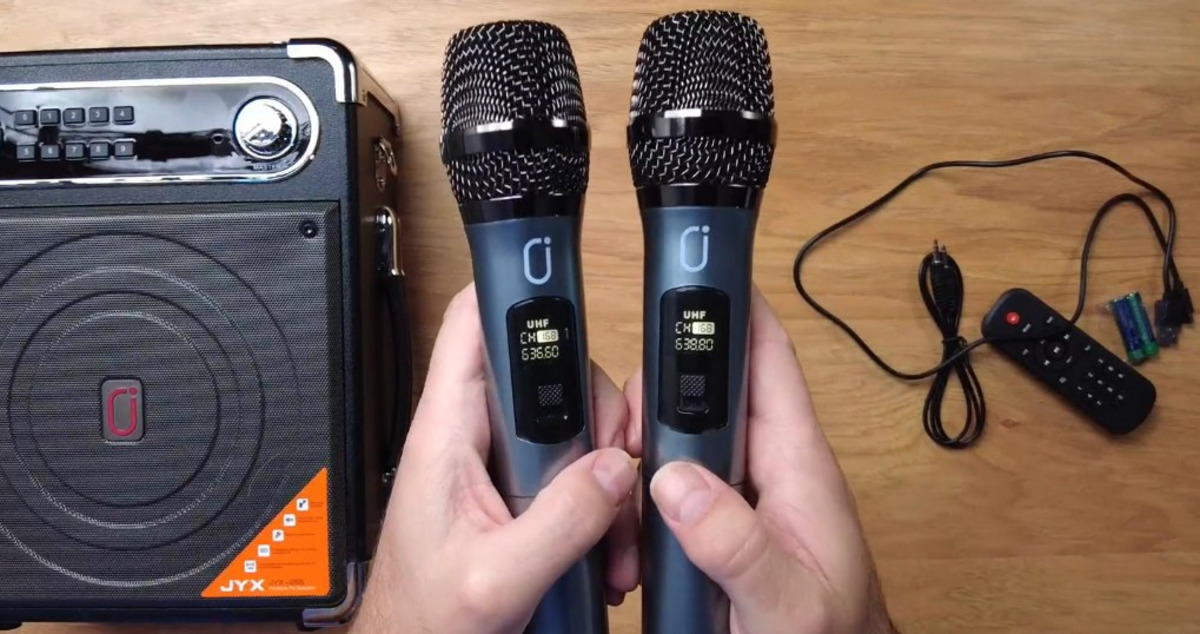

Microphone
How To Hook Up A Wireless Microphone
Published: February 17, 2024
Learn how to easily hook up a wireless microphone for seamless audio transmission. Our step-by-step guide ensures a hassle-free setup. Ideal for any microphone needs.
(Many of the links in this article redirect to a specific reviewed product. Your purchase of these products through affiliate links helps to generate commission for AudioLover.com, at no extra cost. Learn more)
Table of Contents
Introduction
Introduction
Welcome to the exciting world of wireless microphones! Whether you’re a professional performer, a public speaker, or a fitness instructor, the freedom and flexibility offered by wireless microphones can elevate your audio experience to new heights. In this comprehensive guide, we’ll explore everything you need to know about setting up and using a wireless microphone system with ease and confidence.
As technology continues to advance, wireless microphones have become indispensable tools in various fields, enabling seamless movement and eliminating the constraints of traditional wired setups. With the freedom to roam without being tethered by cables, wireless microphones empower presenters, performers, and speakers to engage their audience with dynamic and immersive audio.
Whether you’re a musician looking to captivate a crowd with your electrifying performance, a fitness instructor guiding a high-energy workout session, or a corporate presenter delivering a compelling speech, the right wireless microphone can make a world of difference. By harnessing the power of wireless technology, you can amplify your voice and express your creativity without being confined to a fixed position.
Throughout this guide, we’ll delve into the intricacies of wireless microphone systems, from understanding the technology behind them to selecting the perfect microphone for your specific needs. We’ll also cover the essential steps for setting up and connecting a wireless microphone to a sound system, along with valuable tips for testing and troubleshooting to ensure seamless performance.
So, whether you’re a seasoned audio professional or a newcomer to the world of wireless microphones, join us on this journey as we unlock the potential of wireless audio and empower you to deliver captivating performances and presentations with confidence.
Understanding Wireless Microphones
Understanding Wireless Microphones
Wireless microphones are marvels of modern technology, offering unparalleled freedom of movement and versatility in various audio applications. Unlike their wired counterparts, wireless microphones transmit audio signals to a receiver using radio frequency (RF) or digital transmission, enabling users to move about without being encumbered by cables.
At the core of a wireless microphone system is the transmitter, which is typically integrated into the microphone or worn as a bodypack. The transmitter converts the audio signal from the microphone into a radio signal, which is then transmitted wirelessly to the receiver. The receiver, located near the audio mixing console or amplifier, captures the transmitted signal and converts it back into an audio signal for amplification and reproduction.
Wireless microphones operate within specific frequency bands, which vary depending on the region and regulatory standards. It’s crucial to select a wireless microphone system that operates within authorized frequency ranges to ensure interference-free performance and compliance with local regulations.
One of the key considerations when using wireless microphones is the potential for interference from other wireless devices or environmental factors. Radio frequency interference (RFI) from sources such as mobile phones, Wi-Fi networks, and other wireless equipment can disrupt the seamless operation of wireless microphones. Additionally, physical obstructions and distance from the receiver can impact signal strength and clarity.
Understanding the different types of wireless microphone systems, including handheld, lavalier (lapel), and headset microphones, allows users to choose the most suitable option based on their specific requirements. Each type offers distinct advantages, whether it’s the convenience of a handheld microphone for live performances, the unobtrusive nature of a lavalier microphone for presentations, or the hands-free functionality of a headset microphone for active applications.
By gaining a deeper understanding of the technology and operational principles behind wireless microphones, users can make informed decisions when selecting, setting up, and utilizing these innovative audio tools. In the next section, we’ll explore the essential factors to consider when choosing the right wireless microphone to meet your unique needs and preferences.
Choosing the Right Wireless Microphone
Choosing the Right Wireless Microphone
When it comes to selecting a wireless microphone, various factors come into play to ensure optimal performance and user satisfaction. Understanding the specific requirements of your intended application is crucial in choosing the right wireless microphone that aligns with your needs and preferences.
One of the primary considerations is the microphone type, which includes handheld, lavalier (lapel), and headset microphones. Handheld microphones are versatile and well-suited for live performances, speeches, and vocal presentations, offering a familiar form factor and the ability to control proximity effects. On the other hand, lavalier and headset microphones provide hands-free operation, making them ideal for presenters, fitness instructors, and performers who require freedom of movement without sacrificing audio quality.
Another essential aspect to evaluate is the microphone’s frequency range and compatibility with existing wireless systems. It’s important to select a wireless microphone system that operates within authorized frequency bands to prevent interference and ensure compliance with regulatory standards. Additionally, considering the availability of frequency agile systems that can automatically switch to clear frequencies can enhance the reliability of wireless microphone operation in dynamic environments.
Wireless microphone systems also offer diverse transmission technologies, such as analog FM, digital audio, and diversity reception, each with unique advantages in terms of signal clarity, range, and resistance to interference. By assessing the specific demands of your application, you can determine the most suitable transmission technology that meets your performance expectations.
Furthermore, evaluating the microphone’s battery life, durability, and ease of use is essential for seamless operation and long-term reliability. Battery-powered wireless microphones should offer extended usage time to accommodate prolonged performances or presentations, while robust construction and user-friendly controls contribute to a positive user experience.
Consideration should also be given to the receiver’s compatibility with existing audio equipment, such as mixers, amplifiers, and sound systems. Ensuring seamless integration and compatibility between the wireless microphone receiver and other audio components is vital for achieving a cohesive and reliable audio setup.
By carefully weighing these factors and aligning them with your specific audio needs, you can confidently select the right wireless microphone that empowers you to deliver compelling performances, engaging presentations, and immersive audio experiences.
Setting Up the Wireless Microphone System
Setting Up the Wireless Microphone System
Setting up a wireless microphone system involves several key steps to ensure seamless operation and optimal audio performance. Whether you’re preparing for a live performance, a public speaking engagement, or a fitness class, following these guidelines will help you configure your wireless microphone system with confidence.
1. Selecting an Appropriate Frequency: Before initiating the setup process, it’s essential to identify clear and interference-free frequencies for your wireless microphone system. Utilizing a frequency scanner or spectrum analyzer can aid in identifying available frequencies and avoiding potential interference from other wireless devices or broadcasting sources.
2. Powering On the Equipment: Begin by powering on the wireless microphone transmitter and receiver units. Ensure that the transmitter is securely connected to the microphone or worn as intended, and that the receiver is connected to the audio mixing console, amplifier, or sound system using compatible cables.
3. Pairing Transmitter and Receiver: If your wireless microphone system features a sync function, follow the manufacturer’s instructions to pair the transmitter with the receiver. This process typically involves selecting the same frequency or channel on both the transmitter and receiver to establish a reliable wireless connection.
4. Adjusting Audio Levels: Once the transmitter and receiver are paired, adjust the audio levels on the receiver to achieve an optimal signal-to-noise ratio. This may involve setting the microphone gain, adjusting input levels on the mixing console, and monitoring audio levels through headphones or visual meters to prevent distortion and ensure clear sound reproduction.
5. Securing Proper Antenna Placement: Position the receiver’s antennas for optimal signal reception, considering factors such as antenna orientation, spacing, and line-of-sight to the transmitter. Utilizing remote antennas or antenna distribution systems can further enhance signal strength and minimize potential dropouts or signal loss.
6. Testing Signal Integrity: Before commencing your performance or presentation, conduct comprehensive signal tests to verify the integrity and reliability of the wireless microphone system. This includes testing for signal dropouts, interference, and audio clarity across the intended performance area or venue.
By meticulously following these steps and adhering to best practices for wireless microphone setup, you can establish a robust and reliable audio infrastructure that empowers you to deliver captivating performances and engaging presentations with confidence and clarity.
Connecting the Wireless Microphone to a Sound System
Connecting the Wireless Microphone to a Sound System
Once the wireless microphone system is set up, the next crucial step is to establish a seamless connection between the wireless microphone and the sound reinforcement system. This process ensures that the audio signal captured by the wireless microphone is effectively integrated into the overall audio setup, allowing for amplification, mixing, and distribution as required for the specific application.
1. Selecting Input Channels: If using a mixing console or audio interface, designate appropriate input channels for the wireless microphone signals. This may involve selecting dedicated microphone inputs, line inputs, or auxiliary channels based on the configuration of the sound system.
2. Setting Input Levels: Adjust the input levels for the wireless microphone channels on the mixing console or audio interface to optimize signal strength and prevent clipping or distortion. Carefully monitoring input levels and applying appropriate gain staging techniques ensures that the wireless microphone signals are integrated seamlessly into the audio mix.
3. Applying Signal Processing: Depending on the requirements of the audio application, consider applying signal processing such as equalization (EQ), compression, or effects to the wireless microphone signals. This can help tailor the audio characteristics to suit the performance or presentation, enhancing clarity and intelligibility.
4. Routing Audio Outputs: Determine the routing of the wireless microphone signals within the sound system, directing them to the main speakers, monitor speakers, recording devices, or other audio destinations as needed. Utilize the routing capabilities of the sound system to ensure that the wireless microphone signals are distributed appropriately.
5. Monitoring and Sound Checking: Conduct thorough sound checks and monitoring to verify the integration of the wireless microphone signals within the overall audio setup. This involves listening to the wireless microphone signals through the main speakers and monitoring systems, addressing any issues related to audio quality, feedback, or signal routing.
6. Coordinating with Other Audio Sources: If multiple audio sources are part of the performance or presentation, coordinate the wireless microphone signals with other inputs, such as instruments, playback devices, or additional microphones. This coordination ensures a cohesive and balanced audio mix that complements the overall production.
By meticulously connecting the wireless microphone to the sound system and integrating its signals into the audio framework, you can harness the full potential of the wireless microphone system, delivering compelling and immersive audio experiences across various applications.
Testing and Troubleshooting
Testing and Troubleshooting
Thorough testing and troubleshooting are essential aspects of ensuring the reliable performance of a wireless microphone system. By conducting comprehensive tests and addressing potential issues, users can preemptively mitigate challenges and optimize the functionality of the wireless microphone setup.
Signal Integrity Testing: Before any live performance or presentation, it’s imperative to conduct signal integrity tests across the entire coverage area. This involves moving throughout the performance space while monitoring the wireless microphone signals for potential dropouts, interference, or signal degradation. Identifying and addressing signal integrity issues proactively is crucial for delivering uninterrupted and high-quality audio.
Range and Coverage Assessment: Evaluate the effective range and coverage of the wireless microphone system, considering factors such as signal strength, line-of-sight obstacles, and potential signal attenuation in larger venues. Understanding the limitations and capabilities of the wireless microphone system’s range enables users to optimize their positioning and anticipate potential signal challenges.
Feedback Management: Implement effective feedback management techniques to prevent and address potential audio feedback during sound checks and rehearsals. Utilize graphic equalizers, notch filters, and proper microphone positioning to mitigate the risk of feedback, ensuring clear and distortion-free audio reproduction.
Battery Performance Testing: Verify the battery performance of wireless microphone transmitters, ensuring that they can sustain the intended duration of use without interruptions. Monitoring battery levels and implementing reliable power management practices is essential for preventing unexpected power failures during performances or presentations.
Interference Identification and Resolution: Identify and address potential sources of interference, such as competing wireless devices, radio frequency congestion, or environmental factors that may impact signal clarity. Implementing frequency coordination and interference avoidance strategies mitigates the risk of signal disruption and ensures consistent wireless microphone operation.
Backup and Contingency Planning: Develop contingency plans and backup solutions in the event of unforeseen technical issues with the wireless microphone system. This may involve having spare batteries, alternative microphone options, or backup signal paths to maintain audio continuity in case of equipment failure.
By diligently testing the wireless microphone system and proactively addressing potential challenges through effective troubleshooting, users can instill confidence in the reliability and performance of the wireless audio infrastructure, enabling seamless and professional delivery of audio content across diverse applications.
Conclusion
Conclusion
In conclusion, the world of wireless microphones offers a realm of possibilities for performers, presenters, educators, and audio enthusiasts. The freedom of movement, coupled with the versatility and convenience of wireless technology, has revolutionized the way audio is captured, transmitted, and reproduced in diverse settings.
By understanding the operational principles and technological nuances of wireless microphone systems, users can make informed decisions when selecting the right equipment for their specific needs. Whether it’s a dynamic handheld microphone for live performances, a discreet lavalier microphone for presentations, or a hands-free headset microphone for active applications, the diverse range of wireless options empowers users to express themselves with clarity and confidence.
Setting up and connecting a wireless microphone system involves meticulous attention to detail, from selecting clear frequencies and adjusting audio levels to integrating the wireless microphone signals seamlessly into the sound reinforcement infrastructure. Thorough testing and troubleshooting further ensure the reliability and performance of the wireless microphone system, preemptively addressing potential challenges and optimizing signal integrity.
As users venture into the realm of wireless microphones, it’s essential to embrace the possibilities while remaining vigilant about best practices for setup, operation, and maintenance. Adhering to regulatory standards, optimizing signal transmission, and implementing effective interference management strategies contribute to a seamless and professional audio experience.
Ultimately, the journey of harnessing the power of wireless microphones is a testament to the transformative impact of technology on audio expression and communication. Whether captivating audiences with compelling performances, engaging listeners with captivating presentations, or delivering immersive audio experiences, wireless microphones pave the way for seamless, dynamic, and impactful audio delivery.
As you embark on your wireless microphone endeavors, may the knowledge and insights shared in this guide empower you to unlock the full potential of wireless audio, enriching your creative pursuits and elevating your audio experiences with unparalleled freedom and expression.


